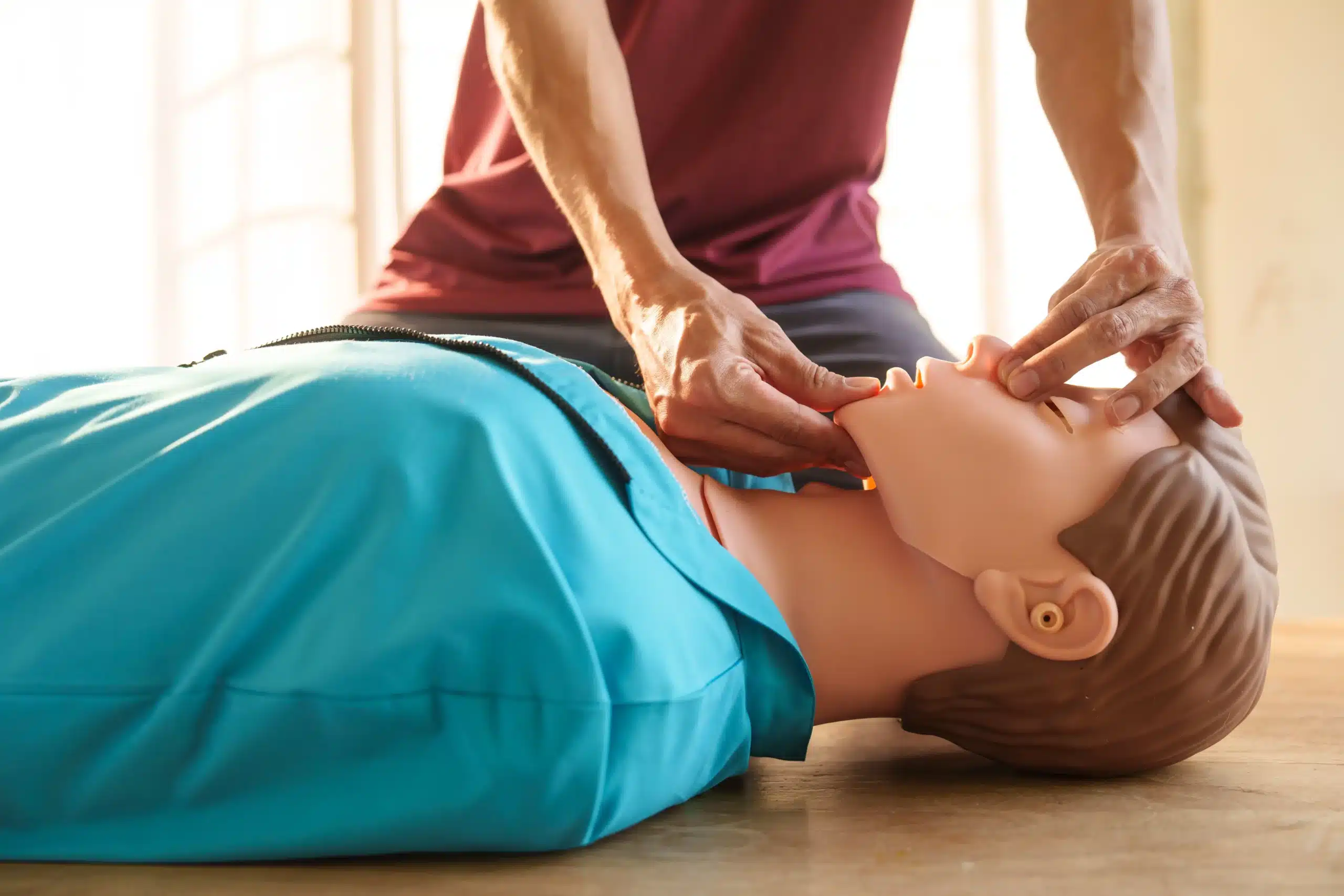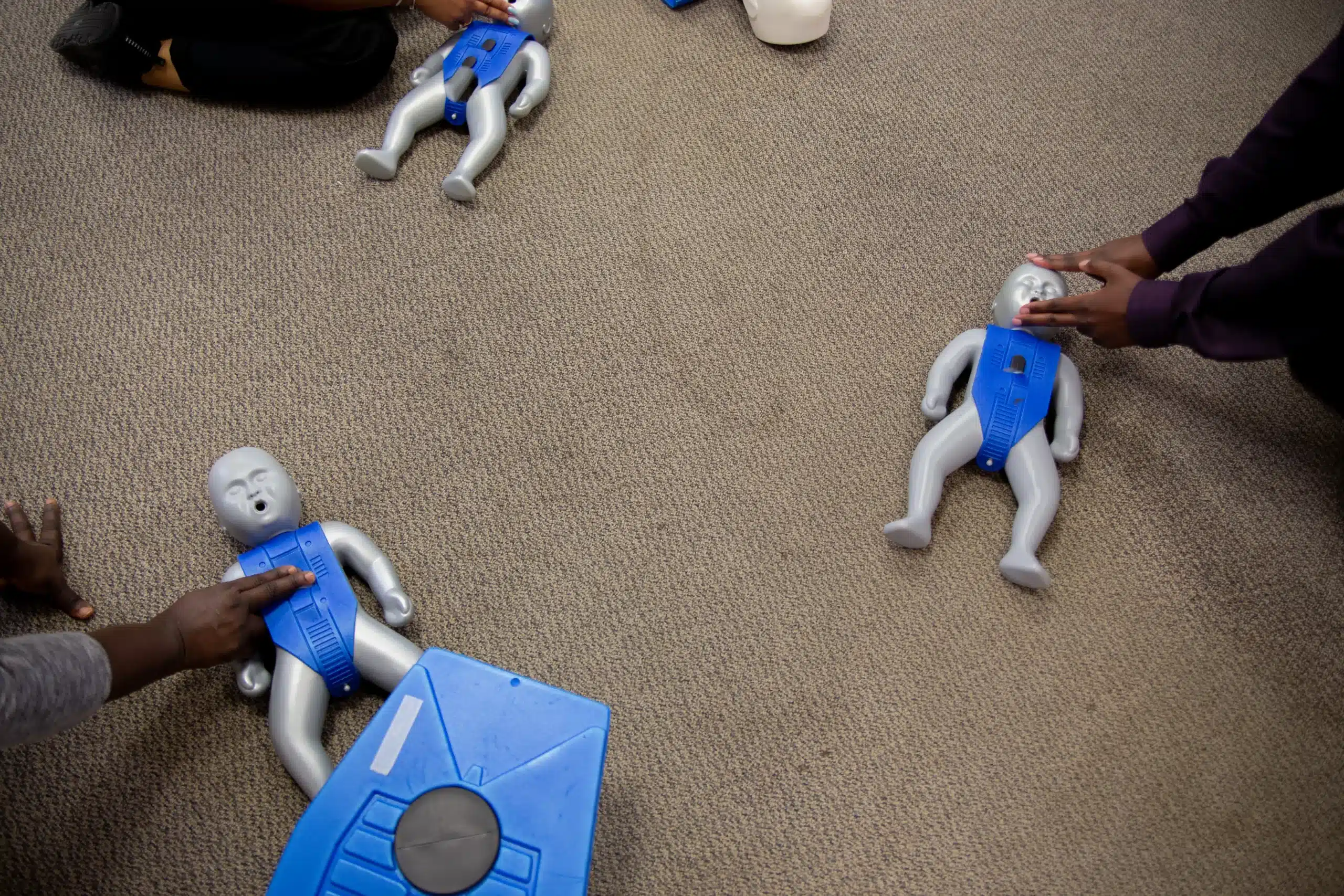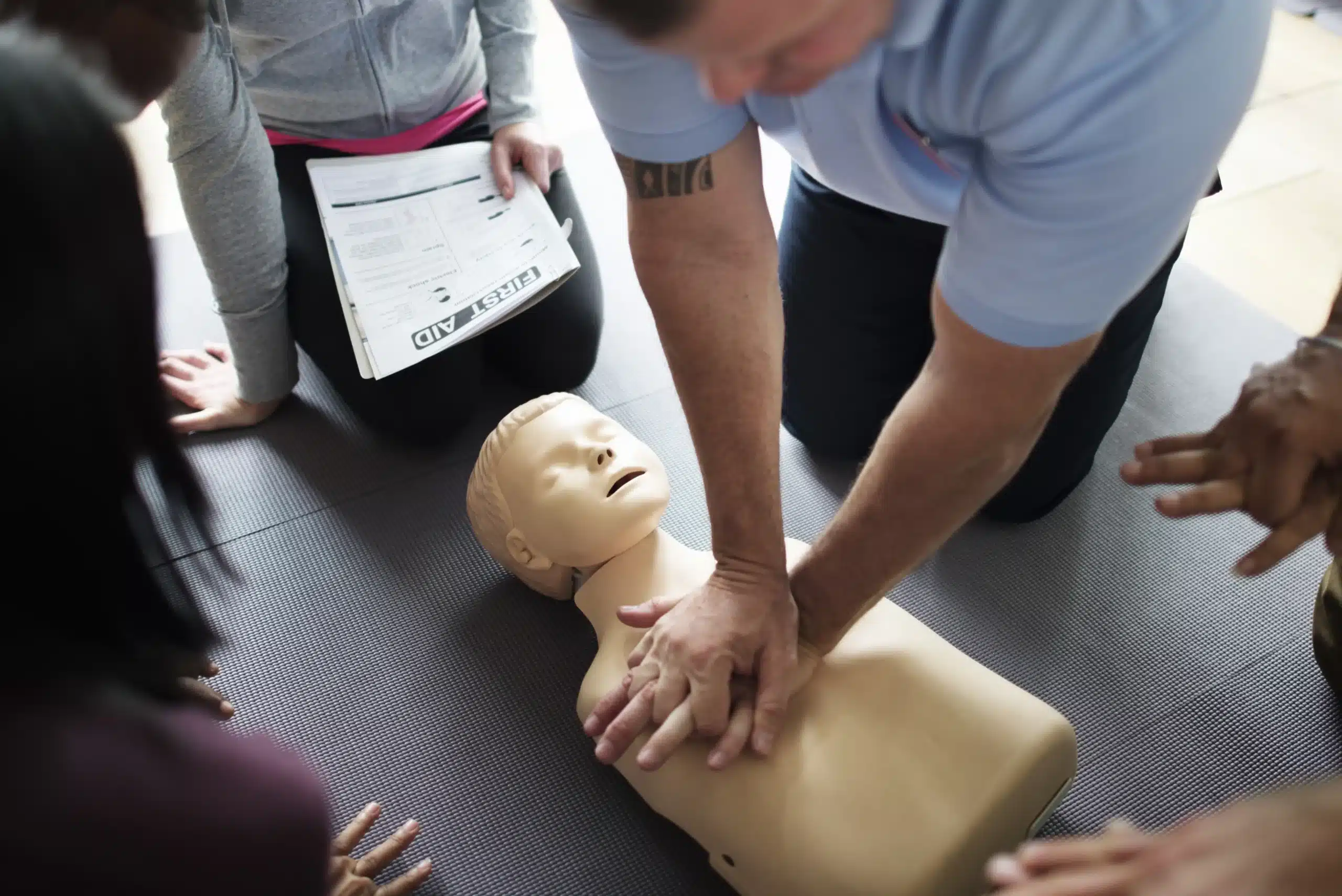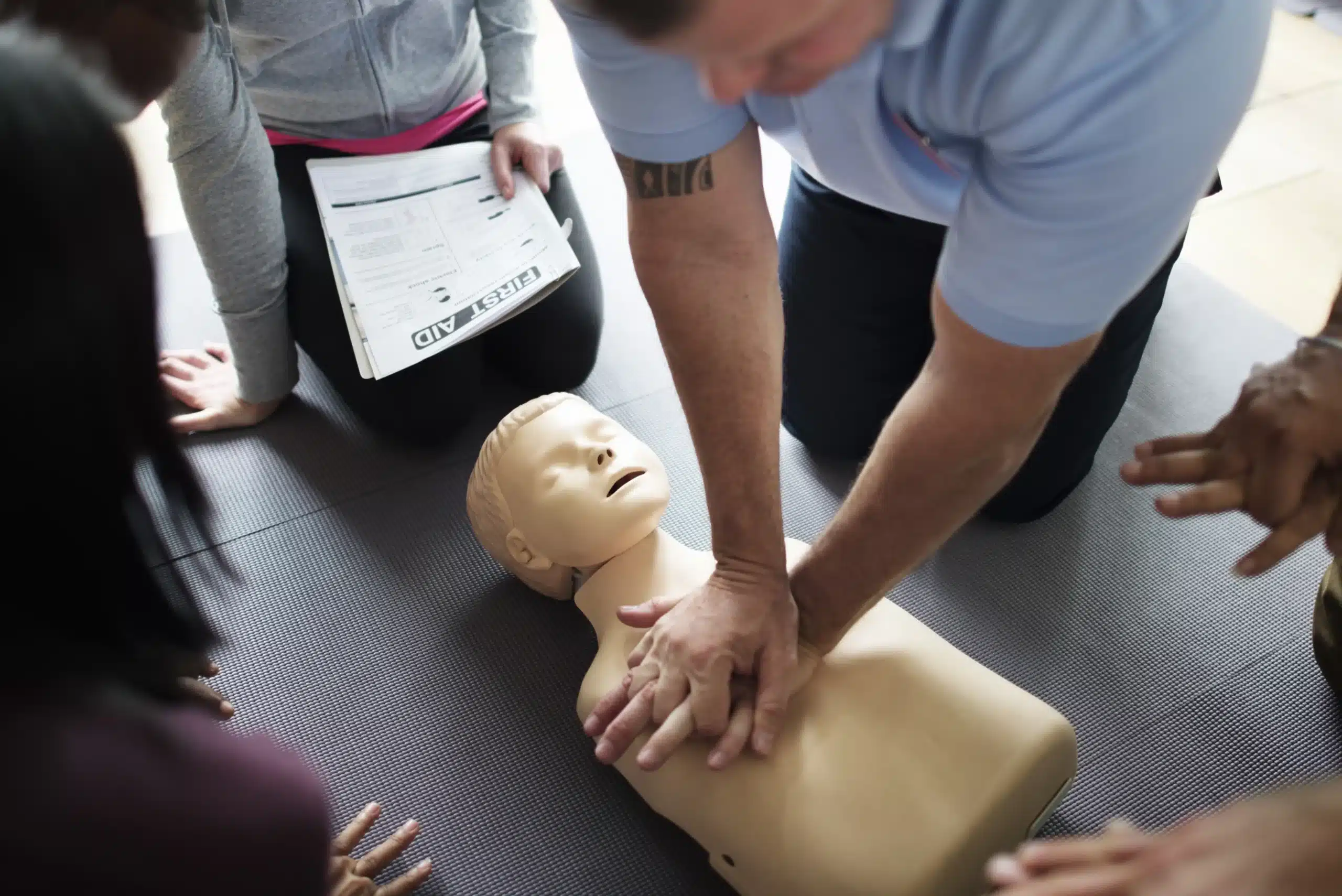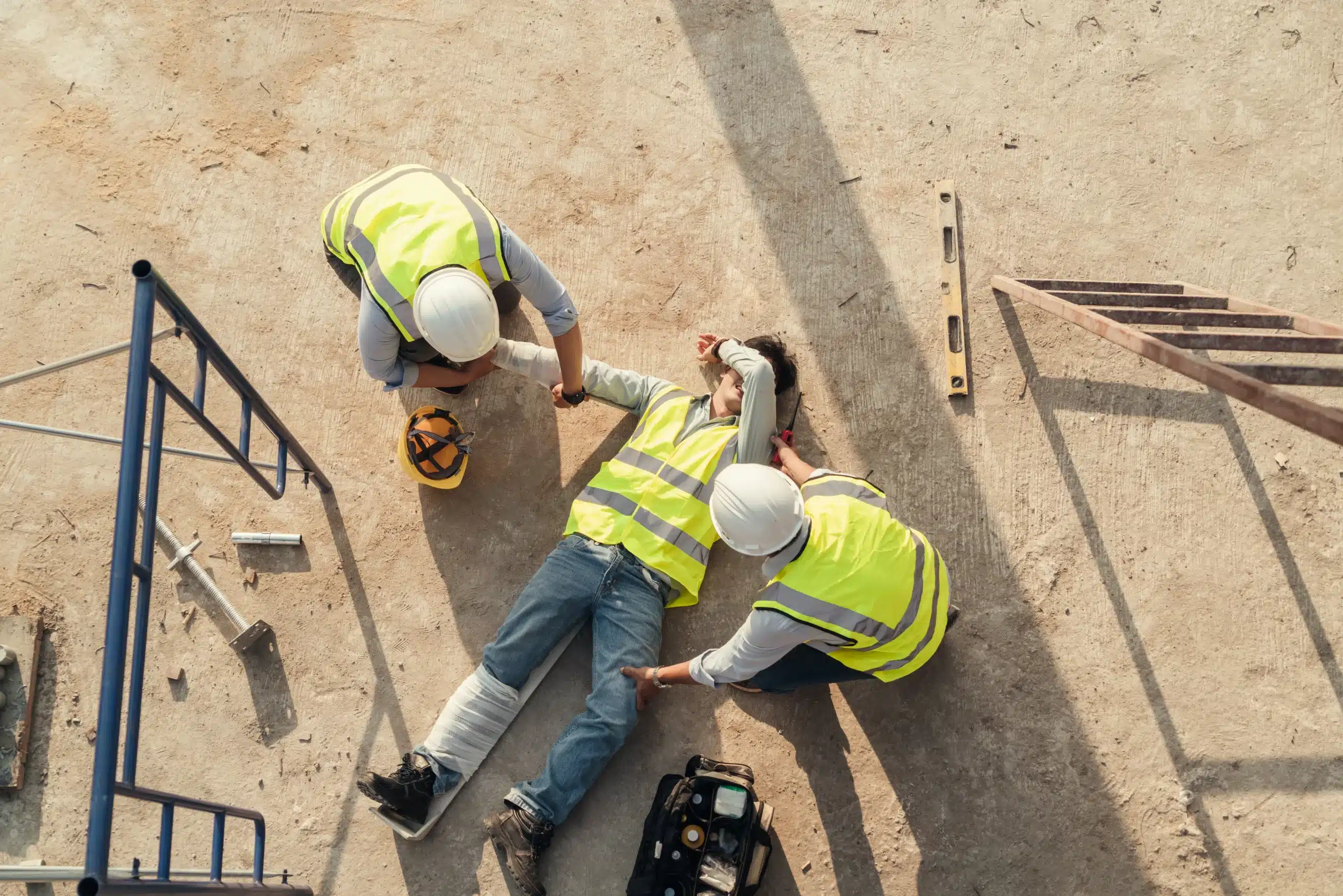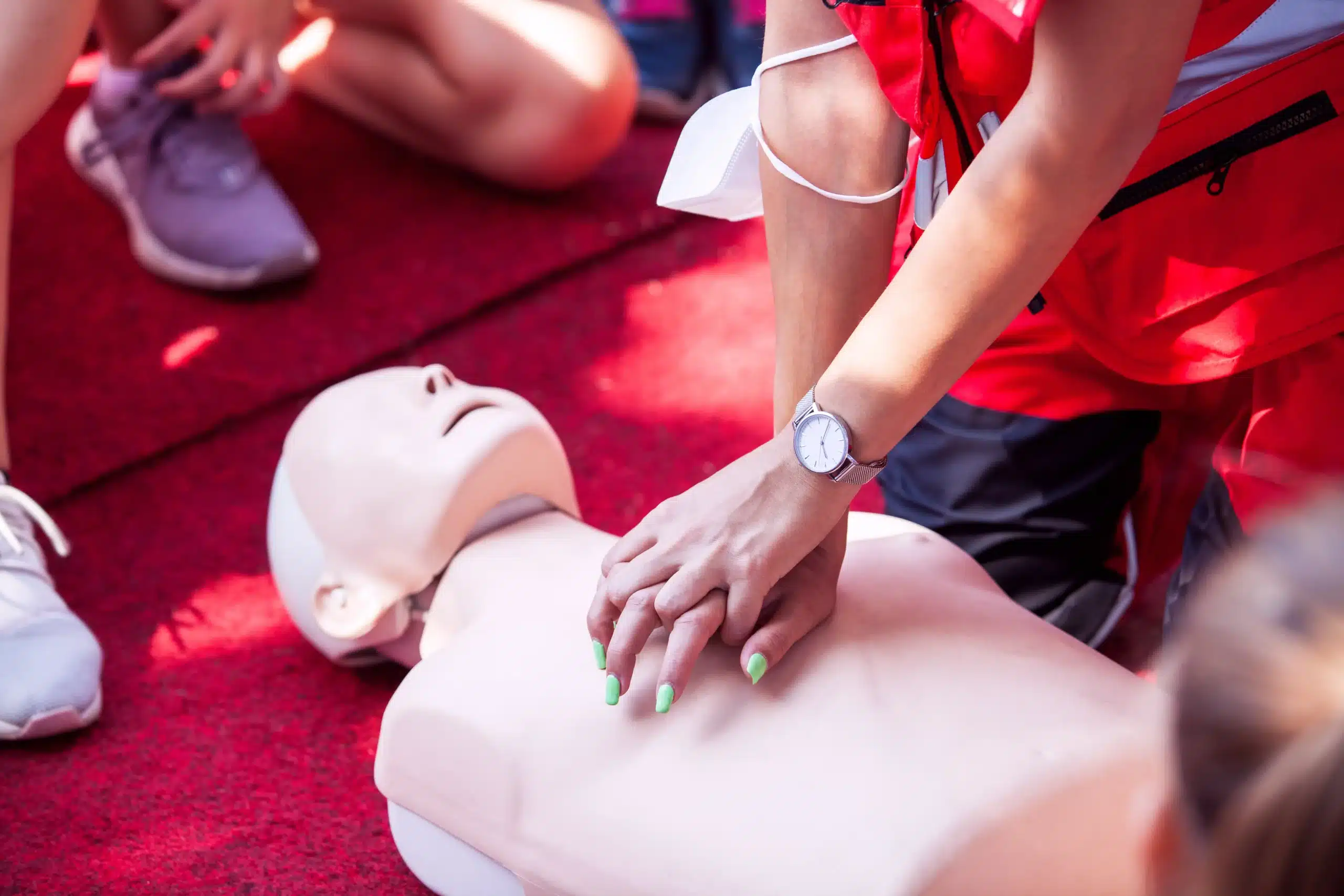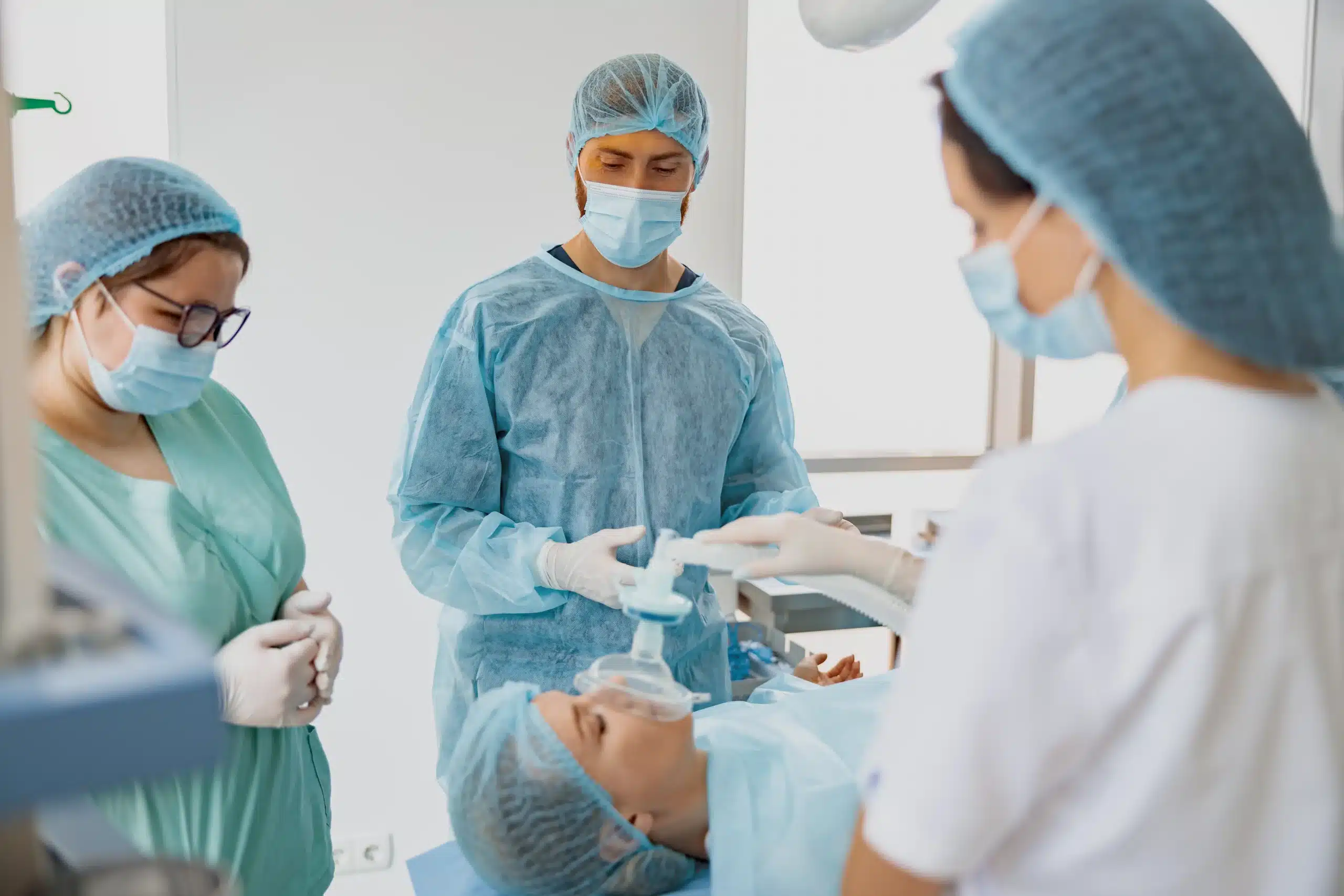In a world where seconds can matter, CPR certification equips you with the power to make a life-saving difference. This guide demystifies the process of getting CPR certified, breaking down the different types of certifications, learning formats, and costs involved. We’ll also explore the career and personal benefits of CPR training and provide actionable steps for finding a course near you, including how to search effectively for “CPR certification near me.” Whether you’re a healthcare professional, a concerned parent, or simply someone who wants to be prepared, this guide is your starting point.
Key Takeaways
- Find the Right CPR Class for You: Your ideal CPR course aligns with your career aspirations, personal needs, and preferred learning style. Consider factors like the type of certification (BLS, ACLS, PALS, First Aid), the format (online, in-person, blended), and the provider (AHA, Red Cross, local organizations) to make the best choice.
- Locate Training Near You: CPR classes are more accessible than you might think. Use online searches, contact local community centers, hospitals, or fire departments, and explore national providers like the American Red Cross and Redwood City CPR Classes to discover convenient options.
- CPR Certification Makes a Difference: Learning CPR equips you with essential life-saving skills, valuable for career advancement, workplace safety, and personal preparedness. It empowers you to confidently respond to emergencies and potentially save lives, making a positive impact on your community.
What are My CPR Certification Options?
Choosing the right CPR certification involves understanding the different types of classes, learning formats, and certification providers. Let’s break down each element to help you make the best decision.
CPR Class Types
CPR classes cater to various needs and professions. You can find courses designed for healthcare providers, professional rescuers, or the general public. Some popular CPR certifications include:
- Basic Life Support (BLS): This BLS course covers core CPR skills for adults, children, and infants, along with AED use and relief of choking. It’s essential for healthcare professionals and anyone in a first responder role. Many non-medical professions also require BLS certification. Check with your employer to confirm which certifications they accept.
- Advanced Cardiovascular Life Support (ACLS): ACLS builds upon BLS, focusing on advanced techniques for managing cardiovascular emergencies and providing team-based resuscitation. This certification is crucial for medical professionals working in critical care settings.
- Pediatric Advanced Life Support (PALS): The PALS course equips healthcare providers with the skills to manage pediatric emergencies. It’s essential for pediatricians, nurses, paramedics, and other healthcare professionals who regularly work with children.
- Neonatal Resuscitation Program (NRP): NRP training prepares healthcare professionals to handle resuscitation of newborns. This specialized training is vital for those working in labor and delivery, neonatal intensive care units, and other newborn care settings.
- First Aid: Often combined with CPR training, first aid certification teaches how to respond to common injuries and medical emergencies. It’s a valuable skill for anyone, regardless of profession.
While formal certification is valuable for demonstrating competency, remember that even without official training, providing some form of CPR in an emergency is better than none. Learn more about the importance of CPR.
Learning Formats: In-Person, Online, and Blended
CPR courses offer flexible learning formats to fit your schedule and preferences:
- In-Person: Traditional in-person classes provide hands-on training with instructors and allow for real-time feedback and practice. This format is ideal for those who learn best in a structured, interactive environment. You’ll have the opportunity to ask questions and practice skills with certified instructors.
- Online: Online CPR courses offer convenience and self-paced learning. They typically involve video instruction, interactive exercises, and online exams. This format works well for those with busy schedules or limited access to in-person classes. However, it’s important to choose a reputable online provider that meets AHA guidelines.
- Blended Learning: Blended learning combines online coursework with in-person skills sessions. This approach offers the flexibility of online learning with the benefit of hands-on practice and instructor guidance. It’s a good balance for those who want the convenience of online learning but also value in-person instruction.
Compare Certification Providers
Several organizations offer CPR certification. Here’s a quick overview of some of the most common providers:
American Heart Association (AHA)
The AHA is a leading authority on CPR and emergency cardiovascular care. Their certifications are widely recognized and respected, particularly in healthcare settings.
American Red Cross
The American Red Cross also provides CPR/AED and first aid training and offers various learning formats. Red Cross certifications are widely accepted and suitable for various professions. Explore Red Cross training options.
Redwood City CPR Classes
Redwood City CPR Classes offers a range of AHA-certified courses, including BLS, ACLS, PALS, and NRP. They provide hands-on training and flexible scheduling options. Serving Palo Alto, Redwood City, and Menlo Park, CA, they also offer group discounts and a low-price guarantee.
Local Community Centers and Hospitals
Many community centers and hospitals offer CPR training courses, often at more affordable rates. These classes are a good option for individuals seeking basic CPR and first aid certification. Check with your local community center or hospital for available programs.
Fire Departments and EMS Services
Fire departments and EMS services frequently provide CPR training to their communities. Check with your local fire department or EMS agency for available courses. They may offer free or low-cost options.
Find the Right CPR Course Near You
So, you’ve decided to get CPR certified—fantastic! Now comes the task of actually finding a course that fits your needs and schedule. This section breaks down the process step by step.
Locate Classes in Your Area
Start by searching online. A quick Google search for “CPR classes near me” will generate a list of potential training providers in your area. You can also check with organizations like the American Red Cross, which offers various CPR/AED training options, including in-person, online, and blended learning formats. For those in and around Palo Alto, Redwood City, and Menlo Park, Redwood City CPR Classes offers a convenient location. Don’t forget to check with local community centers, hospitals, fire departments, and EMS services, as they often host CPR training sessions.
Register for a Class and Check Prerequisites
Once you’ve found a few promising options, visit their websites or contact them directly to learn about available class dates, times, and any prerequisites. Contrary to popular belief, you don’t need prior medical certification to take a CPR course, as explained in this article on common CPR misconceptions. However, some advanced courses, such as ACLS or PALS, may require a current BLS CPR certification. Redwood City CPR Classes offers all these courses. Be sure to inquire about specific requirements before registering.
What to Expect During CPR Training
CPR training is designed to be practical and hands-on. You’ll learn essential skills, including chest compressions, rescue breaths, and how to use an AED. A good CPR course will also address common first aid and CPR misconceptions, as highlighted in this helpful article on debunking CPR myths. Expect a combination of demonstrations, interactive practice, and realistic scenarios to build your confidence.
Renew Your Certification
CPR certifications typically expire after two years. This article on CPR certification costs in Illinois mentions the standard two-year certification period and the need for renewal. Staying current ensures you have the most up-to-date knowledge and techniques. Many providers offer renewal courses, often at a reduced price. Plan to recertify before your current certification lapses. Redwood City CPR Classes makes it easy with convenient schedules and competitive pricing, including group discounts and a low-price guarantee.
How Much Does CPR Certification Cost?
CPR certification is an investment in your skills and ability to respond to emergencies. While cost is a practical consideration, remember that knowing CPR can make a real difference. Let’s break down the typical costs associated with getting certified.
Average Prices for Different Certification Levels
The price of CPR certification varies based on several factors. The level of certification you need (like Basic Life Support (BLS), Advanced Cardiovascular Life Support (ACLS), or Pediatric Advanced Life Support (PALS)) plays a big role. BLS certification, often required for healthcare providers, educators, and other professionals, typically costs between $75 and $100. More specialized certifications like ACLS and PALS, geared towards healthcare professionals dealing with more complex emergencies, usually have a higher price tag. Redwood City CPR Classes offers a range of courses and transparent pricing, so you can find the right fit for your needs and budget. Also, check our low price guarantee. Don’t forget to factor in things like study materials or any required renewal fees when budgeting for your certification.
Group Discounts and Financial Aid
If you’re certifying a group, such as a workplace team or students, explore group discounts. Many providers, including Redwood City CPR Classes, offer reduced rates for group training. This can be a cost-effective way to ensure everyone on your team has the necessary skills. Some organizations, like the American Red Cross, may also offer financial assistance programs or scholarships to help cover the cost of certification. It’s always worth checking with your chosen provider to see what options are available.
Long-Term Benefits of CPR Certification
Think of CPR certification as an investment, not just a cost. The ability to provide immediate assistance during a medical emergency is invaluable. While you don’t technically need formal certification to perform CPR in an emergency, having proper training through a certified course ensures you’re prepared to act confidently and effectively. The American Red Cross and the American Heart Association emphasize the importance of CPR training and its potential to save lives. Beyond the immediate impact, CPR certification can enhance your career prospects, especially in healthcare and related fields. It demonstrates your commitment to safety and preparedness, valuable qualities for any employer.
Choose the Best CPR Certification for Your Needs
Getting CPR certified is a smart move, but picking the right course takes some planning. This section breaks down how to find the perfect fit for your situation.
Factors to Consider When Selecting a Course
Before you jump into a class, think about why you want CPR certification. Are you required to have it for your job, or do you want to learn for personal reasons? Knowing your “why” helps determine which type of certification you need. For example, healthcare providers usually require a specific level of certification, like BLS, ACLS, or PALS. Consider also whether you prefer in-person instruction or the flexibility of online learning.
State Regulations and Employer Requirements
Some professions have specific requirements for CPR certification. Check with your employer or state licensing board to see if there are particular guidelines you need to follow. This ensures your certification meets all necessary standards. Knowing these requirements ahead of time will save you time and potential headaches down the road.
Balance Cost, Convenience, and Quality
CPR certification involves a few key costs: the course itself, materials, and travel time. Look for programs that offer a good balance of affordability and convenience without sacrificing quality. Group discounts can make training more accessible, and online or blended learning options can fit busy schedules. Redwood City CPR Classes offers a low-price guarantee to help make finding an affordable, high-quality course easier.
Common CPR Training Misconceptions
It’s important to separate CPR facts from fiction. One common misconception is that CPR always revives someone. While CPR is a life-saving technique, it doesn’t guarantee survival. Realistic expectations are key. Another myth is that only chest compressions are necessary. Effective CPR involves both chest compressions and rescue breaths. Understanding these points will help you approach your training with a focus on proper technique.
How CPR Certification Impacts Your Career and Personal Life
CPR certification equips you with skills that can be invaluable in your career and personal life. It’s more than just a certificate—it’s a testament to your ability to respond effectively in critical situations. Let’s explore how this training can make a difference:
Career Opportunities in Healthcare and Emergency Services
Many healthcare and emergency services roles require CPR certification. It’s a fundamental skill for medical professionals, first responders, and anyone working in healthcare settings. Having this certification can open doors to various career paths and demonstrate your commitment to patient care. Even in professions where it’s not mandatory, CPR training can give you a competitive edge, showcasing your preparedness. For aspiring healthcare providers, it’s a crucial step toward building a successful career. CPR training is an important life-saving skill.
Improve Workplace Safety and Personal Preparedness
CPR and first-aid training are essential for maintaining a safe work environment. Equipping yourself with these skills allows you to respond effectively to medical emergencies, whether at work or at home. Knowing how to administer CPR can be the difference between life and death in situations like a heart attack or near-drowning. It empowers you to take action and potentially save a life while waiting for professional medical help. This preparedness benefits you and creates a safer environment for those around you. Debunking common myths about CPR is crucial for empowering more people to act confidently and effectively in emergency situations.
Build Confidence in Crisis Situations
Beyond the practical skills, CPR training instills confidence in handling crisis situations. Learning CPR in a hands-on class provides the experience and knowledge to react calmly and effectively under pressure. This confidence extends beyond medical emergencies, empowering you to take charge in various challenging situations. It fosters a sense of responsibility and preparedness, allowing you to act decisively when needed.
Related Articles
- CPR Training in Menlo Park: Your Complete Guide – Redwood City CPR Classes
- CPR Certification in Redwood City: A Complete Guide
- CPR Training in Palo Alto: Your Complete Guide – Redwood City CPR Classes
- Online CPR Classes in Redwood City: Your Guide – Redwood City CPR Classes
- CPR Renewal in Redwood City: Your Easy Guide – Redwood City CPR Classes
Frequently Asked Questions
Which CPR certification is right for me? The best CPR certification depends on your specific needs. If you’re a healthcare professional, BLS, ACLS, or PALS might be required. For non-medical professionals or personal knowledge, a basic CPR/AED and first-aid course is a great option. Consider your career goals and personal reasons for getting certified when making your decision. Contact Redwood City CPR Classes to discuss which course aligns with your objectives.
What if my CPR certification expires? CPR certifications typically expire every two years. You’ll need to take a renewal course to stay current with the latest guidelines and maintain your certification status. Many providers offer renewal courses, often shorter than the initial certification course.
How do I find CPR classes near me? A quick online search for “CPR classes near me” is a great starting point. You can also check with local hospitals, community centers, fire departments, and organizations like the American Red Cross and the American Heart Association. Redwood City CPR Classes serves Palo Alto, Redwood City, and Menlo Park, CA.
What can I expect during a CPR class? CPR classes combine instruction, demonstrations, and hands-on practice. You’ll learn essential techniques like chest compressions, rescue breaths, and how to use an AED. Expect a supportive learning environment where you can ask questions and practice your skills.
Do I need any prior medical experience to take a CPR class? No prior medical experience is needed for most basic CPR courses. However, some advanced certifications, like ACLS and PALS, may require a current BLS certification. Check with your chosen provider to confirm any prerequisites.
